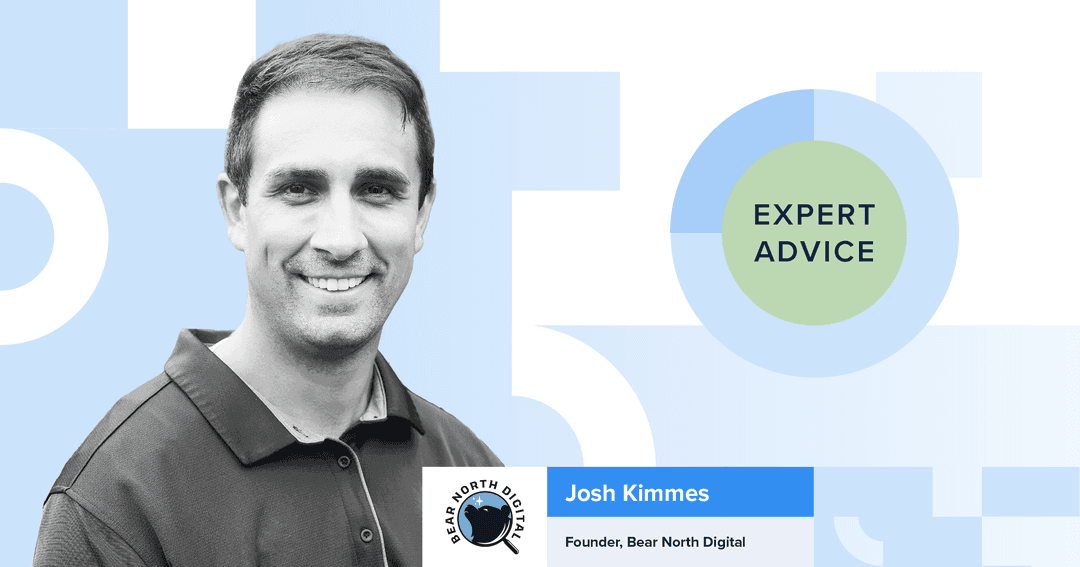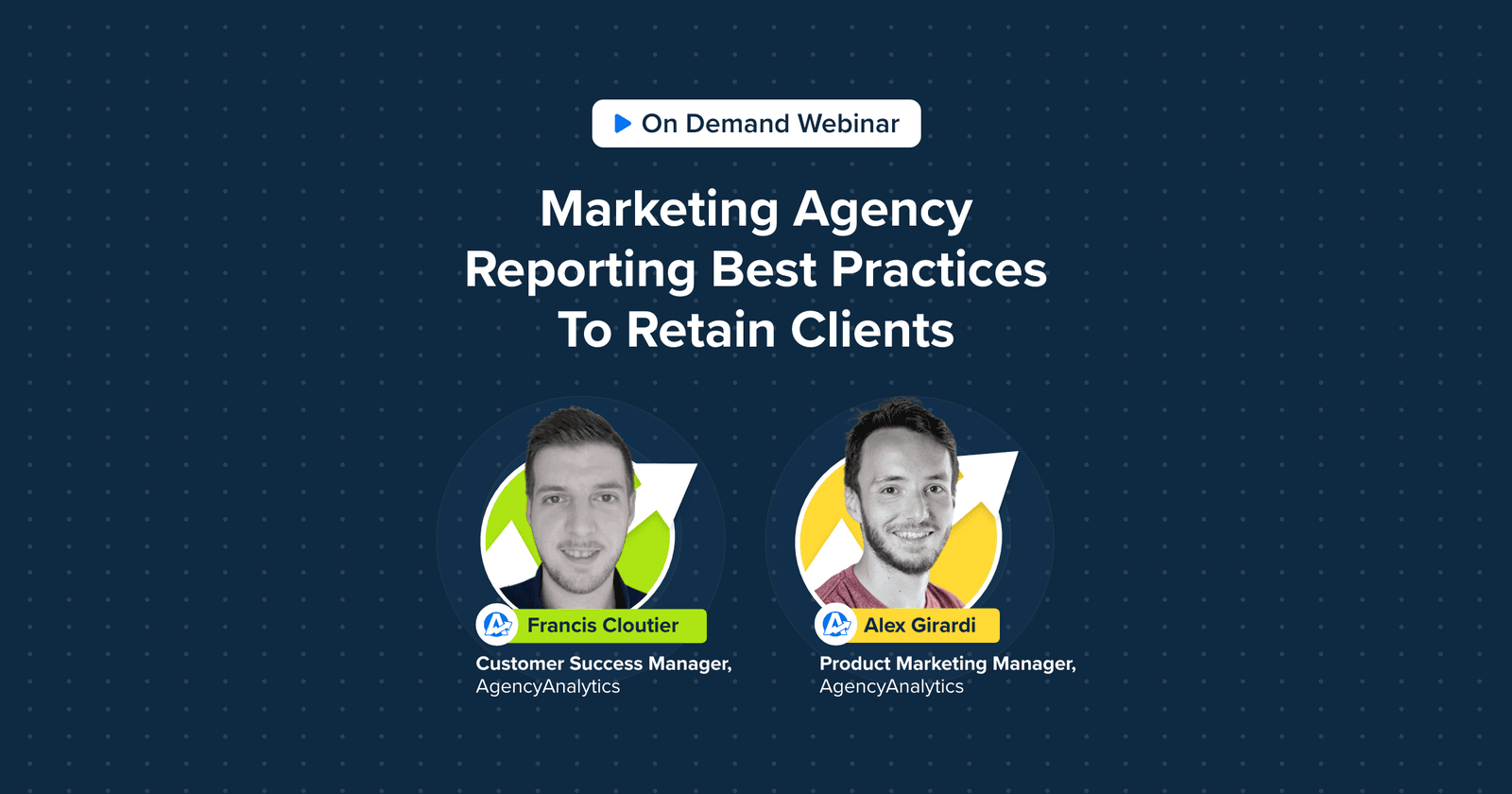Table of Contents
Table of Contents
- What is a Client Engagement Strategy–and Does Your Agency Need One?
- How Do We Measure "Client Engagement" and Create Metrics Around It?
- Developing a Client Engagement Strategy That Drives Agency Results
- When Great Results Aren’t Enough: The Engagement Factor
- Your Agency's Next Steps for Client Engagement Improvement
7,000+ agencies have ditched manual reports. You can too.
Free 14-Day TrialQUICK SUMMARY:
A client engagement strategy focuses on meaningful interactions across every stage of the client journey. This article shares nine proven strategies, including personalized communication and actionable insights, to strengthen client relationships and enhance retention.
Early in my entrepreneurial journey, I struggled to understand the true value of client engagement. I was efficient at what I did, had some work ethic, and quickly lined up too much work for me to handle alone.
I soon realized that clients appreciate consistent communication, even when there isn’t significant progress or “good news” to share. After all, they’ve invested in your mutual relationship and naturally want updates on how their investment is performing.
Through my experience working behind the scenes for various agencies—ranging from independent freelancers working solo to established 50-person teams with processes for everything—I’ve noticed a recurring theme: Many businesses fall short when it comes to effectively engaging their clients.
This challenge often arises because there’s no single “correct” way to manage client relationships. Client engagement strategy requires a unique blend of skills, empathy, and adaptability. The good news is that these strategies are learnable, meaning you don’t need to be a born communicator to excel at them (although you may have some internal battles to overcome).
A well-executed client engagement strategy offers several key benefits. It provides a competitive edge by setting you apart from businesses that fail to connect meaningfully with their clients. It also fosters deeper customer loyalty, and encourages long-term retention, ultimately driving sustainable growth for your agency. When done right, client engagement becomes a powerful tool for building trust, strengthening relationships, and ensuring long-term success.
In this article, I’m sharing what I’ve learned about how to increase engagement with marketing agency clients, and what our client engagement strategy looks like at Bear North Digital.
What is a Client Engagement Strategy–and Does Your Agency Need One?
A client engagement strategy is a structured plan designed to attract and retain the interest of both current and prospective clients. It achieves this by using intentional, value-driven interactions across a variety of channels, such as phone calls, video meetings, emails, text messages, and other asynchronous communication methods.
A client engagement strategy applies to every touchpoint along the client journey—from the initial awareness stage right through to referrals and long-term advocacy. By incorporating targeted tactics to enhance engagement and establishing clear metrics to evaluate performance, an effective client engagement strategy ensures meaningful, measurable interactions that drive both customer satisfaction and loyalty.
While many agencies assume that simply “providing excellent customer service” is enough to maintain client engagement, without a formal strategy it’s easy for engagement to remain just a concept rather than a measurable metric that’s woven into your practical day-to-day operations.
How Do We Measure "Client Engagement" and Create Metrics Around It?
At first, the concept of tracking “client engagement metrics” might sound intimidating or overly complex. You might be thinking, "I don't even know what client engagement is, now I need to know the metrics around it?" You can relax, it is not that complicated.
Measuring client engagement simply means documenting and monitoring the quality and frequency of your client interactions. These customer engagement metrics can be both objective (like the number of updates or calls) and subjective (such as an internal “health” rating).
A great starting point is to develop a client scorecard. A scorecard is a simple internal tool used to assess the overall status and health of each client relationship. It might involve assigning a color-coded status—such as green for “healthy,” yellow for “needs attention,” and red for “critical”—to quickly understand how each client is faring. This can help you identify if the relationship is on track or if something feels off and requires immediate attention.
In addition to a scorecard, it’s helpful to track various engagement metrics, including:
Number of Updates Sent: How frequently do you communicate progress or new information?
Last Touchpoint: When you last spoke or connected with the client.
Checklists of Updates: What was shared, and how consistently you’re keeping clients informed.
Call Logs: Dates, lengths, and outcomes of phone or virtual meetings.
By clearly defining and monitoring these metrics, agencies measure the effectiveness of their engagement strategies. They help you spot areas for improvement, ensure clients feel valued, and maintain a high standard of communication across all client relationships.
Ultimately, these metrics provide the foundation for delivering a better client experience and improving overall client satisfaction and loyalty.
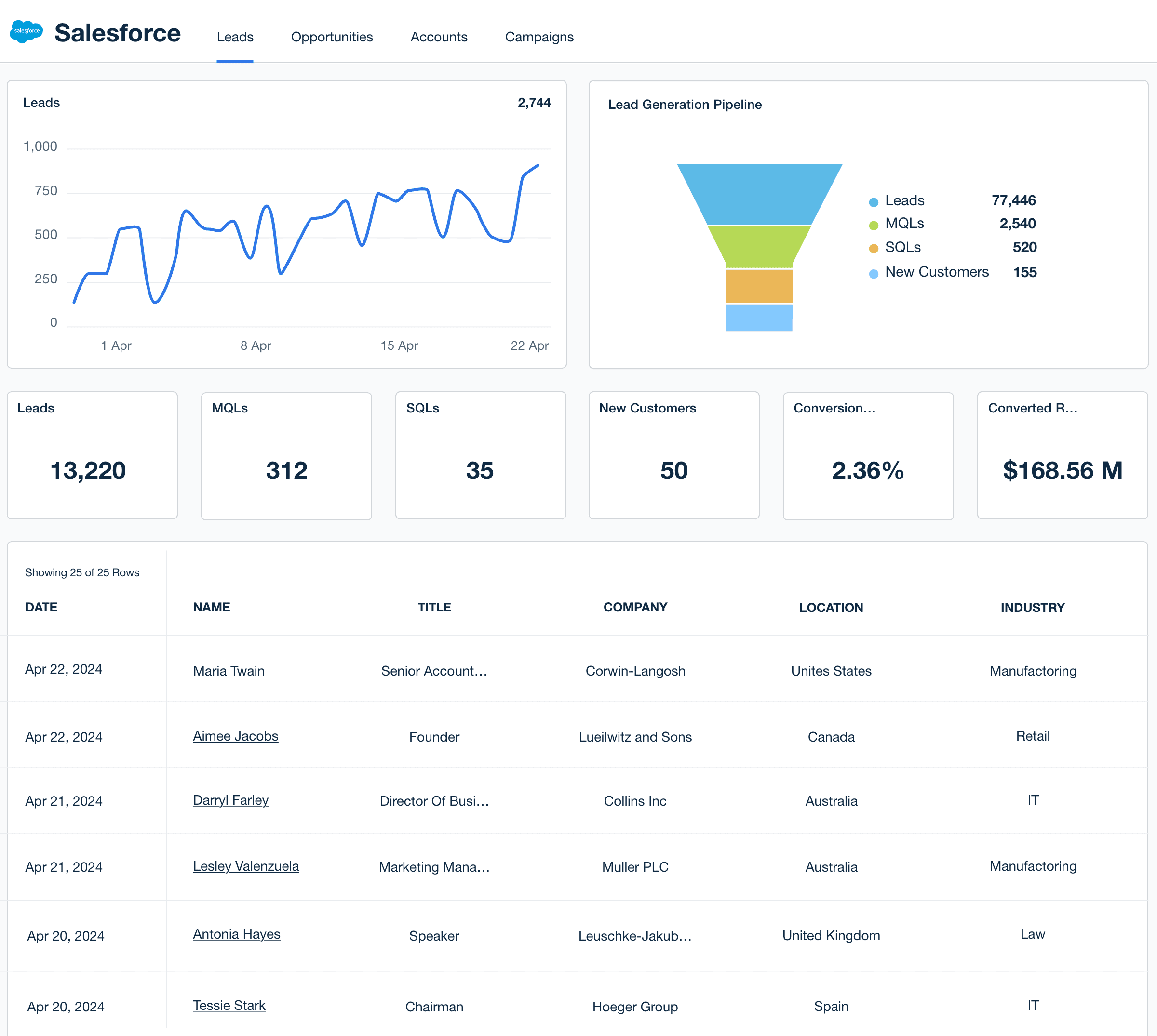
Effortlessly share Salesforce data with your clients using easy-to-read reports, or let them stay in the loop anytime with live dashboards. Start your 14-day free trial with AgencyAnalytics today.
Developing a Client Engagement Strategy That Drives Agency Results
Let’s clear the air: This effective customer engagement strategy isn’t some pie-in-the-sky theory. It’s a practical, proven formula where client success equals agency success. Your client engagement strategy should be more than a buzzword—it needs to be ingrained in your company culture and owned by everyone, from the account managers to the interns who refill the coffee pot.
The key is to keep it measurable and responsive to evolving client needs. By continuously tracking results and adjusting your approach, you create a blueprint for long-term success. A truly effective client engagement strategy leads to increased client loyalty, improved retention, and, ultimately, a win-win scenario where your clients thrive and so does your agency.
Here are 8 factors to keep in mind when developing your agency’s strategy for client engagement:
1. Personalization and Client Experience
Nobody wants to feel like they’re just another name on a spreadsheet. Personalizing interactions at every stage of the client and customer journey transforms ho-hum exchanges into memorable moments.
By tapping into client data (no need to break out the spyglass; just the info they share willingly), you’ll tailor your marketing efforts to match their unique client preferences, guiding them through the buying process with ease.
Consider personalizing email campaigns based on various communication channels, or using social media platforms to highlight offerings that resonate with their interests. When you personalize client experiences, you motivate clients to stick around and become loyal clients who champion your brand’s value. This client-centric approach creates a loyal client base of satisfied clients who eagerly refer new clients to your doorstep.
Plus, the more you zero in on what makes your target audience tick, the more you’ll improve client satisfaction. It’s a simple formula: a client focused approach leads to happier existing clients, who, in turn, stick with you longer.
Over time, this focus on personalization contributes to building client relationships that last, encouraging them to remain clients engaged with your brand and, ultimately, retain clients who appreciate your efforts to continuously increase client engagement.
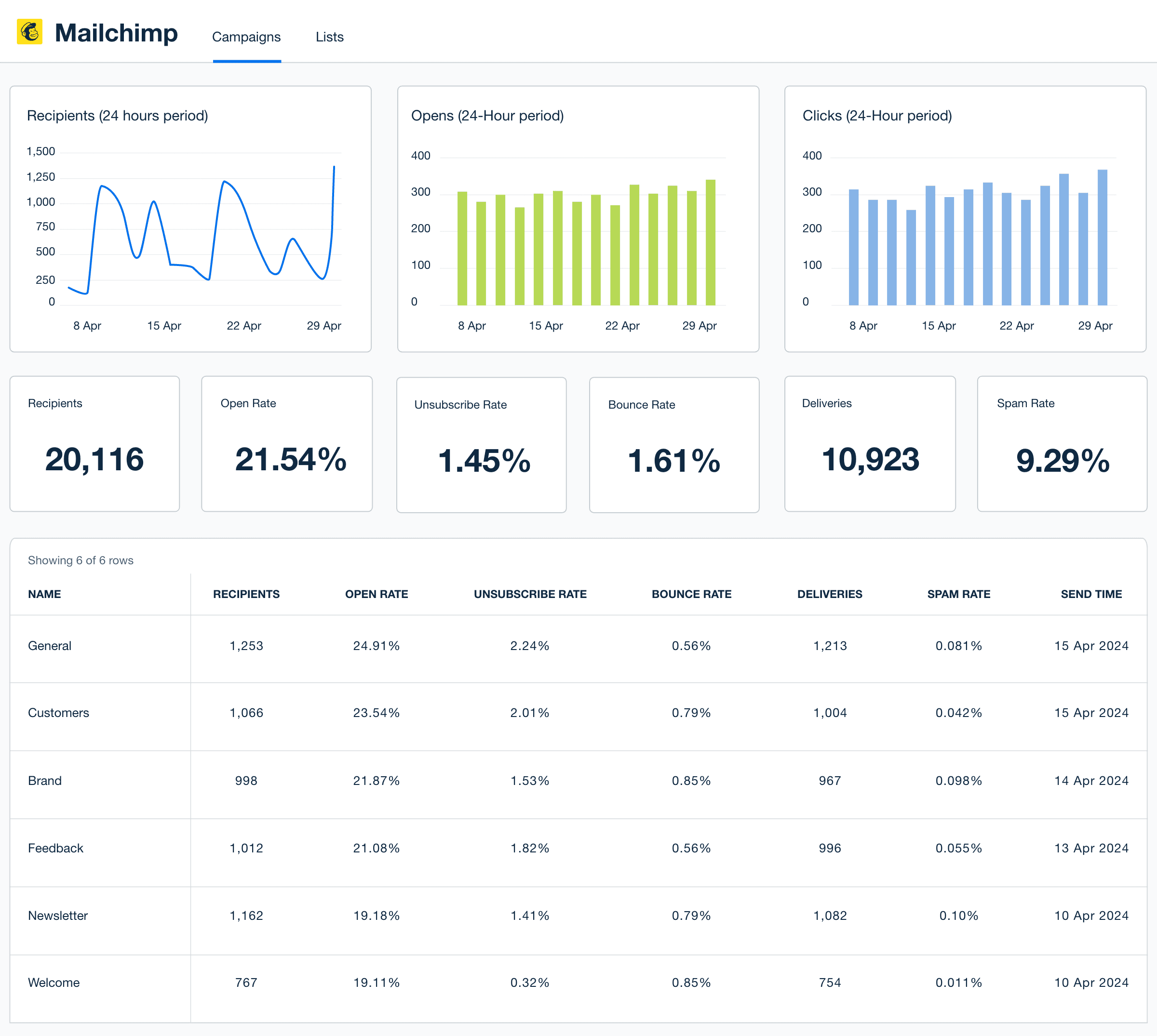
The Mailchimp integration from AgencyAnalytics makes it simple to combine a client’s email marketing metrics with their overall marketing campaigns. Sign up for your 14-day free trial to get started.
2. Collecting and Acting on Client Feedback
When you gather feedback directly from prospective clients and existing clients, you unearth valuable client insights that guide your next steps.
Don’t just stash away this valuable customer data somewhere in a dusty old folder—use it to refine your client engagement strategy. Remember, the goal isn’t merely to collect client feedback; it’s to act on it. That’s how you show a true client focused approach that helps improve client engagement and leads to more satisfied clients over time.
When you respond to input and streamline processes, you effectively improve client satisfaction and encourage clients to keep coming back. By integrating customer feedback and suggestions into your client engagement marketing strategy, you’re meeting client expectations head-on. This solidifies trust, lays the groundwork for brand loyalty, and sets you apart from competitors.
The result? You’ll find more loyal clients and a loyal client base who will vouch for you. It’s all about using their voices to guide your marketing efforts and keep that client lifecycle humming happily along.
3. Increase Transparency and Visibility Into “What Is Going On?”
No one likes being left in the dark—unless they’re at a surprise party, and even then, it’s iffy. Transparency in your client engagement marketing fosters brand loyalty and positions you as a trusted partner in the client journey.
Sharing project plans, progress reports, and milestone updates across various communication channels further engages clients and shows that you value their role in the process.
At BearNorth Digital, we use ClickUp for project management to give clients any time access to their project’s progress. Depending on the client’s comfort level, we’ll even create user accounts for them in ClickUp, so they can view tasks in real time, see deadlines, and track deliverables. This ensures they know exactly “what’s going on” without needing to wait for a formal monthly update.
We also provide regular reporting via AgencyAnalytics, which offers live dashboards showing key performance metrics and campaign insights. In terms of frequency, we typically try to send a “weekly pulse” that outlines not just what has been worked on, but what we’re going to be working on as well.
Read More: 5 Key Steps To Run an Effective Client Reporting Meeting
Whether you’re working with new clients or continuing a relationship with existing clients, shedding light on what’s happening behind the scenes helps improve client engagement and reduce guesswork.
This level of transparency and accessibility helps clients feel involved, and as the agency owner, it provides a lot of peace of mind that we’re fully communicating the value we bring.
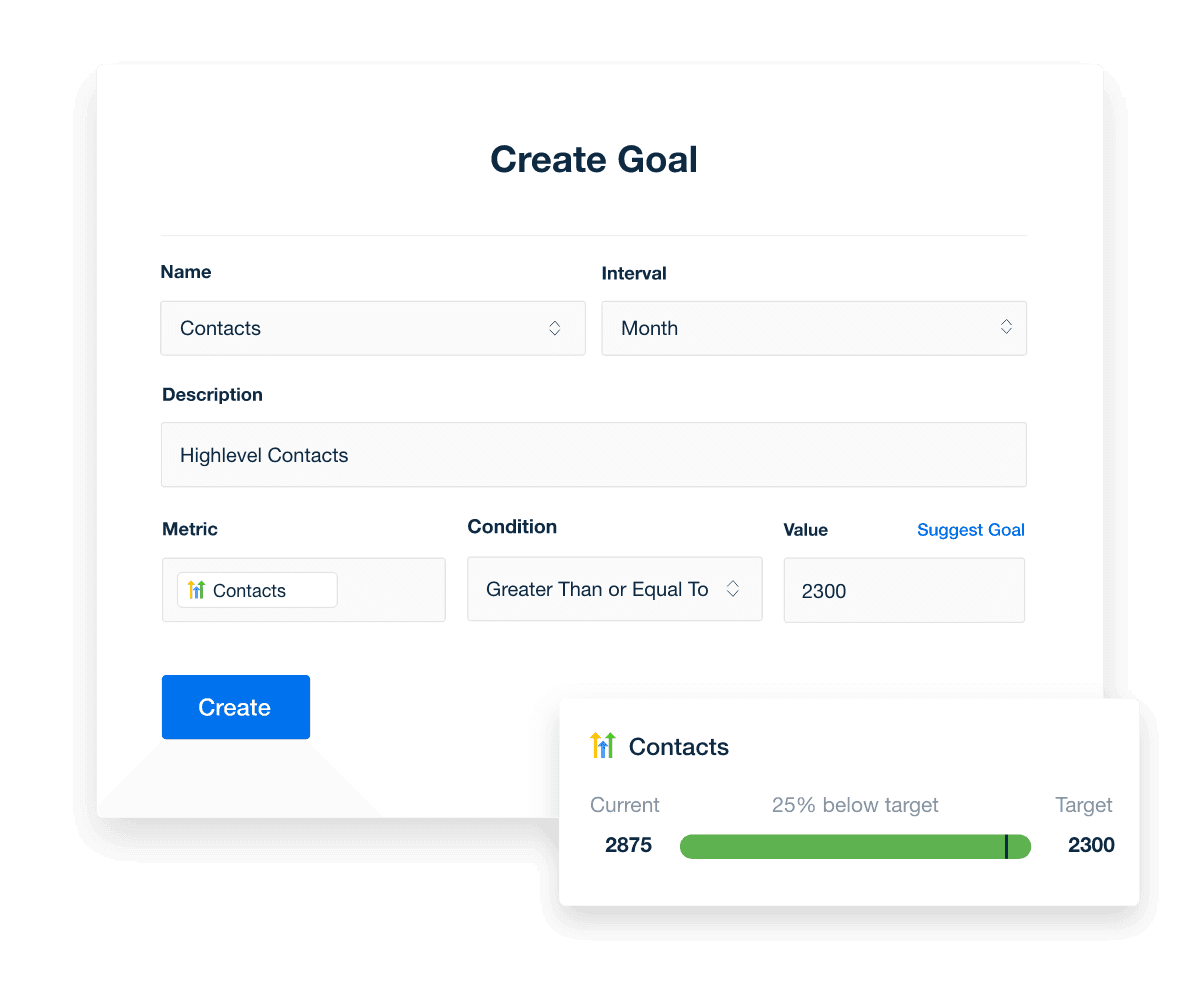
Track your progress and showcase success with the Goals and Milestones feature from AgencyAnalytics. Set clear targets, measure achievements, and keep your clients in the loop. Try it free for 14 days.
4. Client Service and Support
Providing stellar client service isn’t just about fixing problems after they happen—it’s about anticipating them before they ever show up. When you respond quickly to client queries, acknowledge their concerns, and tailor your support to meet diverse client needs, you’re practicing effective client engagement. Think of it as adding cushions before someone falls, not just handing them a bandage afterward.
At Bear North Digital, we put ourselves in the client's shoes and actively scan for anything that could derail a project or engagement. Especially when there’s an internal change within the client’s organization.
For example, one of our clients introduced a new marketing and sales director who would be taking over relations with our agency. I’ve been doing this long enough to know the writing on the wall typically says new people, new vendors. We immediately scheduled intro calls and worked tirelessly to bring them up to speed and encourage their ideas. By proactively ensuring that the new point of contact felt informed and involved, we not only kept the client, but also demonstrated our commitment to their success.
Over time, you not only increase client satisfaction but also influence client behavior in a positive way, guiding them to trust your brand more deeply. This approach helps improve client engagement and build stronger client relationships, leading to a loyal client base who recognizes that you’ve got their back.
5. Onboarding Experience
Picture greeting new clients like old friends and guiding them through the entire client experience with a clear, hassle-free onboarding checklist. This detail-oriented approach enhances user engagement and helps your clients quickly grasp your agency's value proposition.
Read More: Client Onboarding: 10 Steps to Win Trust & Retain Clients
The result? A smooth transition from potential clients to loyal clients who appreciate how easily you aligned with their client needs. Over time, this improved onboarding leads to client retention and sets the stage for long-term relationships, ultimately helping to improve client satisfaction and retain clients for the long haul.
6. Elevate Transparency With Custom KPI Dashboards
Imagine if your clients could see all their KPIs—revenue, user engagement metrics, social media channel performance, and even client engagement metrics—clearly presented in one spot.
Read More: 28 Customer Retention KPIs To Improve Client Loyalty
Offering a customizable marketing dashboard gives clients a front-row seat to your effective marketing efforts.
Our major KPIs, which we track via AgencyAnalytics, are our clients' goal conversions in Google Analytics and their pipeline interactions through their CRM integration.
Having 24/7 dashboards and regular automated reporting has helped us showcase that we’re not just mindlessly executing, but we’re tracking what really matters and providing full access to that data.
Over time, these accessible, visual dashboards will influence how many clients stick with you, turning prospective clients into existing clients who appreciate that you’ve made their data understandable and actionable. With this level of clarity, you’ll motivate clients to celebrate wins, address challenges, and work hand-in-hand to maintain a healthy, loyal client base who sticks around and supports you through thick and thin.
7. Develop Unique Ways You Communicate With Clients
Let’s be honest: repetitive email reports feel about as thrilling as watching paint dry. Spice it up by connecting through multiple channels—send weekly pulse emails, record quick Loom videos, or host AMA sessions.
Got social media marketing tactics to share, or want to gather feedback without imposing? Toss in a short survey or poll! Providing a variety of touchpoints, from Slack channels to social media platforms, ensures you engage clients in ways that fit their busy lives. This shift reflects a truly client centric approach, tailoring communication to different client segments and encouraging them to stay tuned.
By offering these creative avenues, you show potential clients and existing clients alike that you’re flexible, approachable, and eager to keep them informed. Over time, they’ll recognize that you’re not just pushing content at them but actually listening and responding. This approach not only encourages them to become loyal clients but also helps retain clients who value innovative, transparent communication.
My role is currently blended between sales and overseeing operations, and initially I used Loom quite a bit for sales opportunities. However, it’s been much more useful in communicating with clients about opportunities and high level strategy thoughts that I have. I think it essentially shows them that they aren’t just another number to us.
Read More: A Therapist-Turned-Agency-Owner’s Guide To Tough Client Conversations
8. Roadmaps and Goal Tracking
Goal tracking can make or break a successful client engagement strategy. Instead of winging it, align your objectives with what your clients genuinely want.
By mapping out goals clearly and monitoring them over time, you gather feedback that reveals whether your tactics are paying off. With each step forward, you encourage clients to trust your process, and as milestones are reached, you demonstrate that your approach delivers results.
At Bear North Digital, when we’re working in areas that we specialize in, we set up custom goals in AgencyAnalytics to keep clients constantly aware of progress toward their KPIs. For instance, most of our Shopify clients have goals within AgencyAnalytics that show us in real time our metrics, such as average order value, sales, and more, and whether we’re on track for that time interval or off-track. Along the way, we can adjust our strategies based on the data, and be in front of the problem when we’re off-track as well.
This data-driven path helps improve client engagement by showing that you take their needs seriously. Ultimately, consistent progress tracking and transparent reporting transform random guesses into informed decisions—ones that resonate with your target audience and inspire satisfied clients to remain loyal clients, driving higher client lifetime value and ensuring a long, mutually beneficial partnership.
When Great Results Aren’t Enough: The Engagement Factor
Over the years, I’ve seen it firsthand: you can deliver mind-blowing results—skyrocketing leads, outperforming benchmarks, the whole nine yards—and still lose clients. Why? Because even with stellar outcomes, if you don’t focus on building a successful client engagement strategy, your existing clients can drift away.
For example, we once had a client who was seeing incredible ROI from our campaigns, yet they were on the fence about renewing. Sensing their hesitation, we doubled down on engagement: scheduling weekly one-on-one calls, giving them a dedicated Slack channel for quick questions, and proactively sensing questions that could come up. By meeting them where they were and ensuring we were inclusive, we turned what could have been a departure into a recommitment. It turned out that this client, in particular, had been burned by a couple of marketing agencies in the past.
In the end, it’s not just about hitting targets; it’s about recognizing that clients may have differing needs when it comes to being involved and informed, and valued every step of the way. When you actively engage with clients, especially during times of uncertainty, they become loyal partners who stick around for the long haul.
Your Agency's Next Steps for Client Engagement Improvement
Remember, every improvement you make to your client engagement marketing strategy has a ripple effect. Whether it’s refining your onboarding process, broadening communication channels, or turning raw client data into actionable insights, each small yet strategic step adds value. Over time, these incremental enhancements lead to stronger client relationships, more effective client engagement, and a loyal customer base with higher retention rates—benefiting both your clients and your agency.
Embrace this journey, stay curious, and don’t shy away from trying out fresh ideas. As you test, measure, and refine, trust that you’re moving closer to a successful customer engagement strategy. Your future clients, and your future self, will thank you for it.

Written by
Josh is the heart behind Bear North Digital, a boutique marketing agency that helps eCommerce, B2B, and service-based organizations through tailored growth marketing plans that deliver real results.
See how 7,000+ marketing agencies help clients win
Free 14-day trial. No credit card required.



